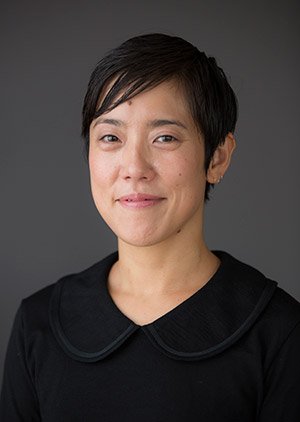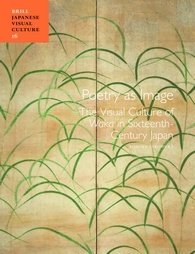Q & A with Art Historian Tomoko Sakomura

As a specialist in Japanese art history, Associate Professor of Art History Tomoko Sakomura has always been fascinated by the role the past plays in visual culture. Sakomura's lifelong interest in the relationship between word and image, as well as her interest in medieval Japan, has culminated in a new book, Poetry as Image: The Visual Culture of Waka in Sixteenth-Century Japan. In the book, she examines the ways the visual culture of waka — also known as Japanese poetry — in 16th-century Japan uses protocols developed in the previous six centuries, and what these engagements reveal about the role of the past in cultural productions of the present. Recently, Sakomura answered questions about her research, the history of waka, and what she hopes readers take away from the book.
Briefly, can you define waka?
Waka is a classical form of Japanese poetry in 31 syllables. It is a term used in distinction to Chinese poetry (kanshi), as “wa” denotes “Japan” and “ka” stands for poetry. Since the compilation of the first imperially commissioned anthology circa 905, waka held an exalted place in the arts throughout pre-modern times.
What functions did waka visual culture serve in the 16th century?
Waka artifacts—painting and calligraphy—were expressions of cultivation and knowledge as well as tools for social networking, self-fashioning, and education. Extant waka artifacts from the 16th century suggest that waka practice extended to broader circles among courtiers, warriors, monastics, and townspeople. In varying degrees, waka artifacts embodied cultural, social, and political capital.
How did you become interested in researching this topic?

The role of the past in visual culture is a preoccupation of mine. In 16th-century waka visual culture, there is constant engagement with the past, including past poems, past poets, past gatherings, past artifacts. This engagement is built into the production of waka, since past poetry served as basis for new compositions. Similarly, waka artifacts employ and re-imagine well-established conventions. For example, poems and imaginary portraits of the Thirty-Six Poetic Sages (sanjûrokkasen) appear over and over again. The works may come across as derivative, and so the challenge for me was to show the delicate but significant nuances in ostensible sameness.
Waka is a constant subject in Japanese visual culture, but what had historically received attention in art historical and literary scholarship as well as museum exhibitions was the “classical” period of the 10th to 12th centuries, the period when many conventions were first established, mainly in the imperial court. During my preliminary research for the book, I kept encountering artifacts from the 16th century that followed conventions but were original in their presentation and articulation. The artifacts I encountered were suggesting broader participation and engagement with waka culture beyond the imperial court, especially among warrior leadership. I became interested in the significance of waka artifacts during the 16th century, when successive turnover of warrior leadership led to considerable socio-political tensions between those in power and the imperial court.
In the process of writing the book, it became clear that the courtiers who lacked political and economic clout used the strong identification of waka with the court to their advantage, producing waka artifacts that served as visual arguments for poetic and familial lineages and cultural stewardship. It is fascinating to see emperors and courtiers evoking and invoking their celebrated ancestors, using the past as a way to make arguments for the present through the guise of what is coded as “past.” On the other hand, warrior leaders also recognized and embraced the cultural capital of waka and attempted to demonstrate their worthiness as political leaders through waka artifacts, such as inscription of past poetry.
What is the main thing you hope readers takeaway from your book?
I want to show how the visual culture of waka engaged a sophisticated framework that shaped the way time and space were experienced in pre-modern Japan. Seasons and geographical locations were seen and described through the lens of poetry, and waka artifacts played an important role in shaping and promoting those perceptions. Some works I discuss in the book attempt to bend time, and analyzing how that was done visually was an exciting process for me.
The interaction and dialogue between texts and images (or “word and image” in art historical terms) in the visual field is a key aspect of Japanese art, and I hope that the book will show readers the particular visual language and logic of waka artifacts. I designed the book as a series of case studies on key themes in waka visual culture, such as noted poems, poets, and sites. I wanted to take the reader beyond the surface opulence of many works I explore in the book.
At high-profile social events that brought different social groups together, understanding of waka and appreciation for waka artifacts were expected if you wanted to claim any kind of clout and belonging. In looking at the procedures of poetry gatherings and thinking concretely about how waka artifacts functioned in space and time allowed me to think about the very charged nature of such public and private functions. And the simple fact that, on the individual level, people regularly interacted across social groups. I hope that I was able to show the variety that exists in waka visual culture that captures the fruits of such interactions.


